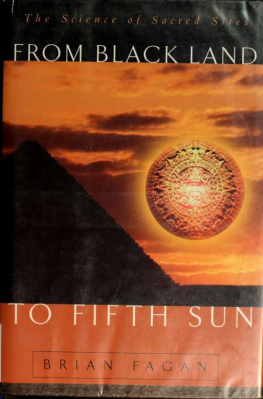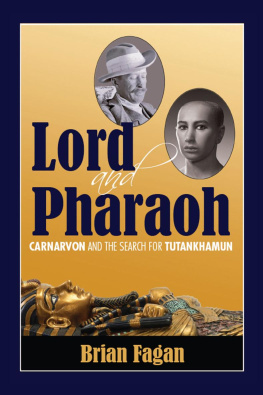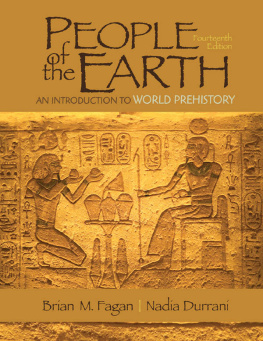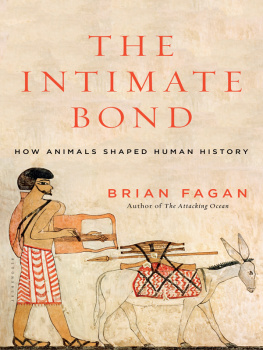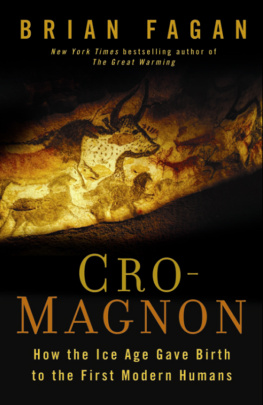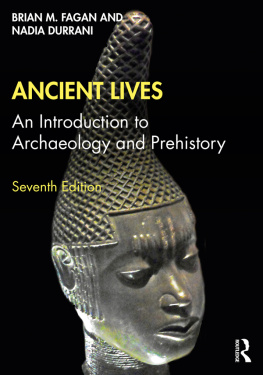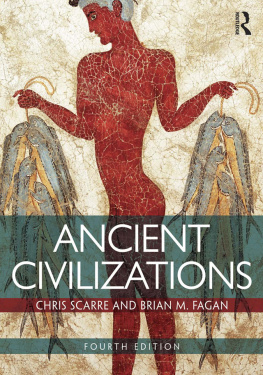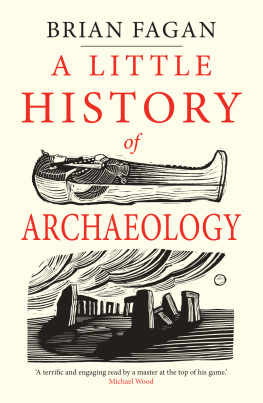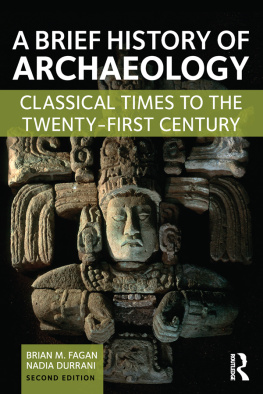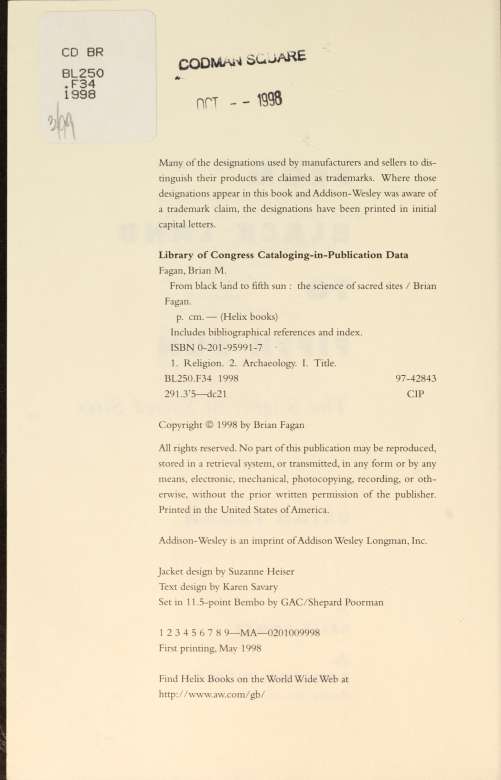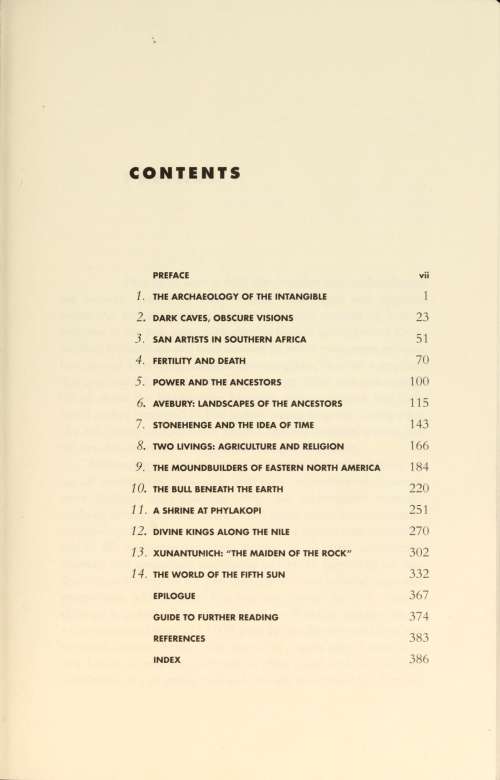This book made available by the Internet Archive.
PREFACE
From Black Land to Fifth Sun describes how archaeologists use modern science to study ancient cosmologies and religious beliefs. All archaeologists analyze the material remains of human behavior in the past, using such durable finds as pottery, stone tools, building foundations, and food remains. In recent years, some scholars have turned from the material to the intangible. They ask a question that was unthinkable even twenty years ago: What can archaeology tell us about the relationships between ancient cultures and their world as they perceived it? The answer comes from the cutting edge of a still-young discipline that treads a fine line between science and the free-for-all world of imagination and pseudoscience.
Archaeology is, fundamentally, a science that relies heavily on logical observation, reasoning, and plain old-fashioned common sense. Without such common sense, the sophisticated scientific methods described at intervals in these pages would be meaningless. Archaeology is not, however, an exact science replete with irrefutable proofs. We archaeologists study people in all their bewildering diversity and sometimes maddening perversity. Inevitably, we also describe, and interpret, the past through our own cultural biases and perspectives, which means that our conclusions are only mere although hopefully closeapproximations of reality. Imagine asking a Cro-Magnon family of 15,000 years ago to describe and interpret twentieth-century France with the aid of a spark plug, a handful o{ cow bones, a computer keyboard, a chess piece, and the concrete foundations of a shopping mall, and you will understand the complex
viii FROM BLACK LAND TO FIFTH SUN
and challenging task that archaeologists today are undertaking albeit in the opposite direction. By combining archaeological and scientific techniques, they are achieving remarkable success in using surviving artifacts as a mirror to reflect the intangible.
Our story begins in the late Ice Age of 15,000 years ago and ends with the Spanish conquest of Aztec civiHzation in A.D. 1521. Each chapter in this book examines a sacred place fi-om the past and uses multidisciplinary science, and sometimes historical sources, to move beyond architecture and artifacts and into the spiritual world. Rather than provide a fully referenced, and distracting, narrative, I have compiled a Guide to Further Reading, which gives basic references for readers wishing to delve into the technical literature in more detail. A list of works referenced in the text also appears at the end of this book. All radiocarbon dates later than 6000 B.C. have been tree-ring calibrated; all measurements are in metric, the common scientific convention.
From Black Land to Fifth Sun was a lengthy developmental process, involving many years of traveling, site and museum visits, and discussions with colleagues in all parts of the world. I am grateful to all those friends and fellow archaeologists who have answered my questions, tolerated my presence in the field, and shown me around their sites, or, at times, entire ancient landscapes. There are so many that I cannot possibly mention them all by name. I hope they will take this acknowledgment as my heartfelt thanks. In particular, Professor Richard Leventhal of the University of CaHfornia, Los Angeles, and his field colleagues were wonderful hosts at Xunan-tunich, BeHze, and deserve a special word of thanks.
Pat Leddy undertook the laborious task of editing the rough draft manuscript, and Jack Scott drew^ the maps and text figures. From the beginning, my agent, Victoria Pryor, has encouraged my continuing on what has proven to be an unusually arduous literary journey. My thanks also to Amanda Cook,Jefi'Robbins, and Lynne Reed of Helix Books for their many kindnesses and suggestions. Copy editor Alicia Jones achieved editorial iniracles with a complex manuscript. I am gratefial to the Department of Special Collections of the Davidson Library, University of California, Santa Barbara, for their assistance with some illustrations.
FROM
BLACK LAND
TO
FIFTH SUN
chapter one
THE ARCHAEOLOGY OF THE INTANGIBLE
All right, I will take you to the world of legend. You know that time, that place well where animals talked and walked as men, untamed, unchanged, real people still...
Hilda Austin, a Nie?kepmx elder from the Sailshan tribe of British Columbia, Canada (quoted from Swan 1994, 320)
Deep in the Central African savanna, the drums mourned the Ila chief all night. One kilometer away, at our excavation camp near the Kafue River, we slept uneasily. I tossed and turned to the insistent drumming, musing on an elder v/ho had died full of years, with hundreds of head of cattle to his name. Only two weeks before, we had drunk beer and talked, as men do, of women and cattle, hunting, spears, and rifles. He had gazed with aged eyes across the open vista of the Kafue Flats, which extended from our camp out to the far horizon, remembering the buffalo hunts of his youth, and carefree days of driving cattle to higher ground when the river flood came. We had talked of rain and the high grasses perfect for grazing, of the right way to burn off a field to fertilize the soil. His stories brought the landscape alivetales of lechwe antelope slain with spears, of stalking warthog in thick reeds. As he took his leave that evening, the chief said: "I have taught my sons. They live in the city, but they will come home to the cattle." I was never to see him alive again.
As the sun rose in a hazy sky illuminating a grey dawn, heavy with the smell of wood smoke from burning fields, the drums fell silent. The chief's five sons had returned home to the cattle and buried their father before noon. They were indeed city men, dressed in nice clothes and possessed of a Western veneer. Nevertheless, they danced on the grave and, as the fine dust rose, sent his spirit to the bush, thus returning their father to the land that had nurtured him and generations of Ila farmers and cattle herders before him. In a few months the chief would become an honored ancestor, one of those who had gone beforea guardian of the land.
I saw the dancing from a distance and walked across to the ancient village mound to get a better view. As I looked back I noted the deep pit of my excavation that lay dark in the brightness of midday. The stratified layers of ash and charcoal exposed village after village, extending down 3 meters from 300 years ago to a founding date more than 1,000 years in the past. Untold generations of farmers had Hved and died in these settlements. The late chief and his Ila people had deep roots in the Kafue Flats.

